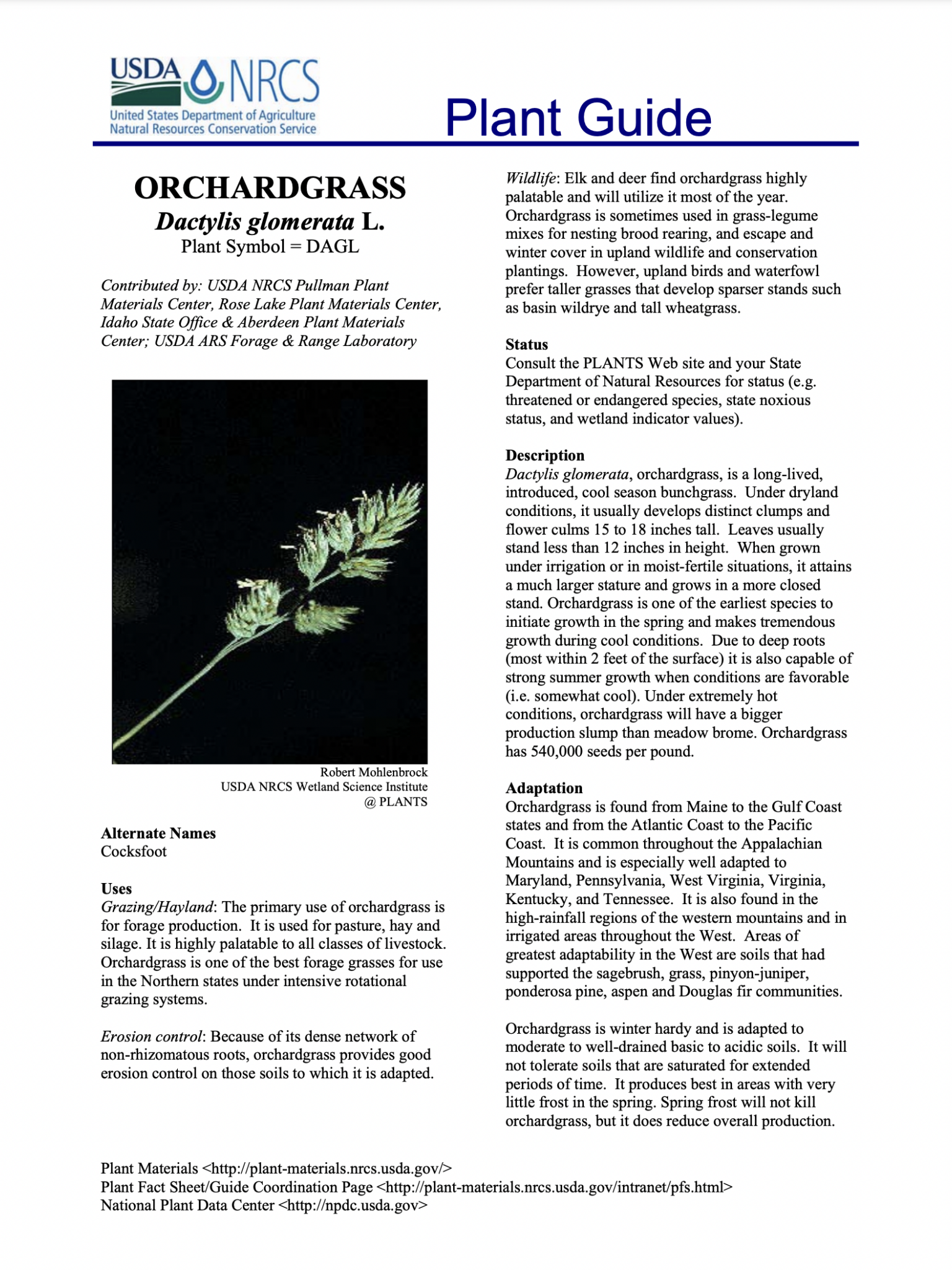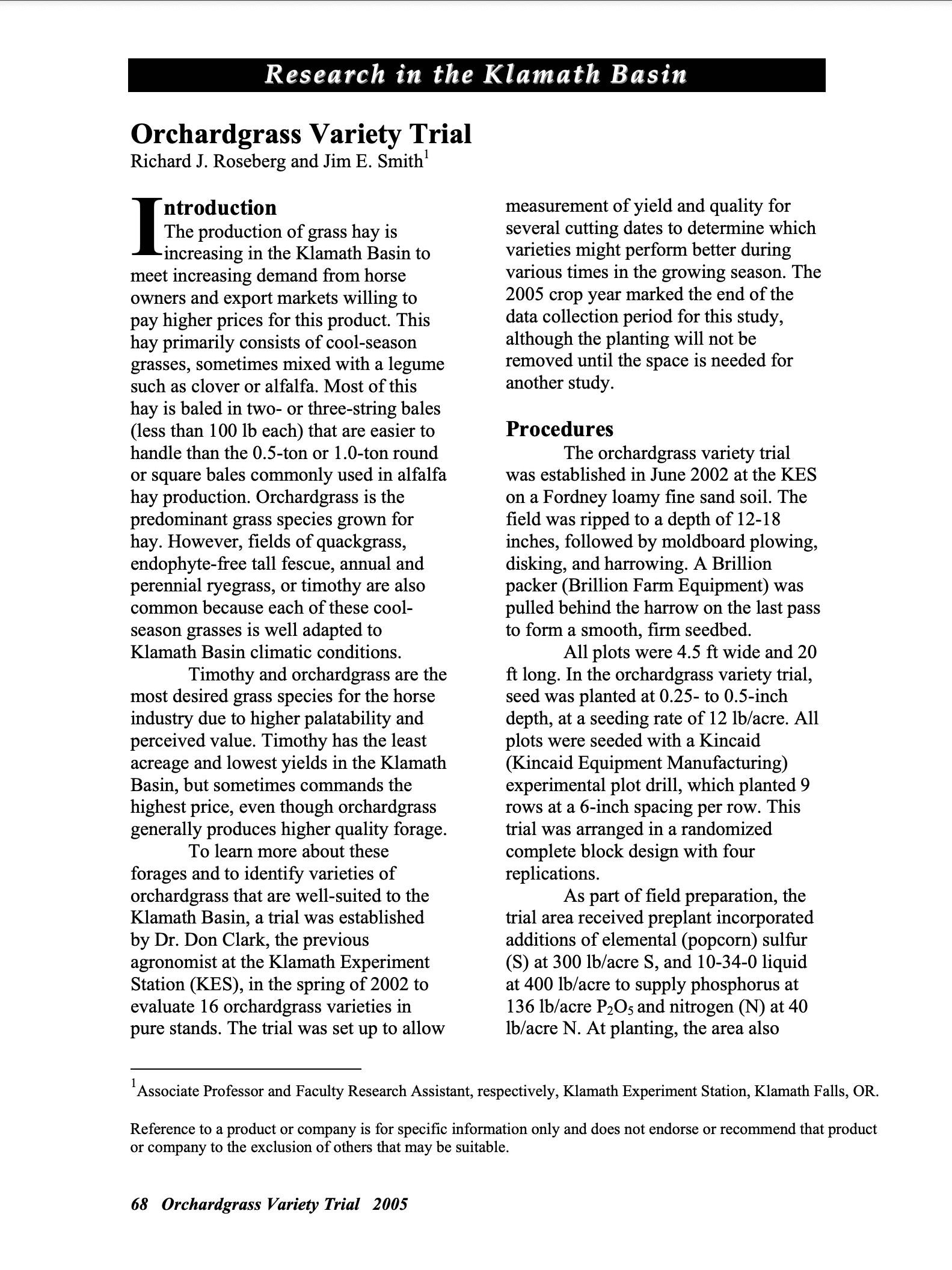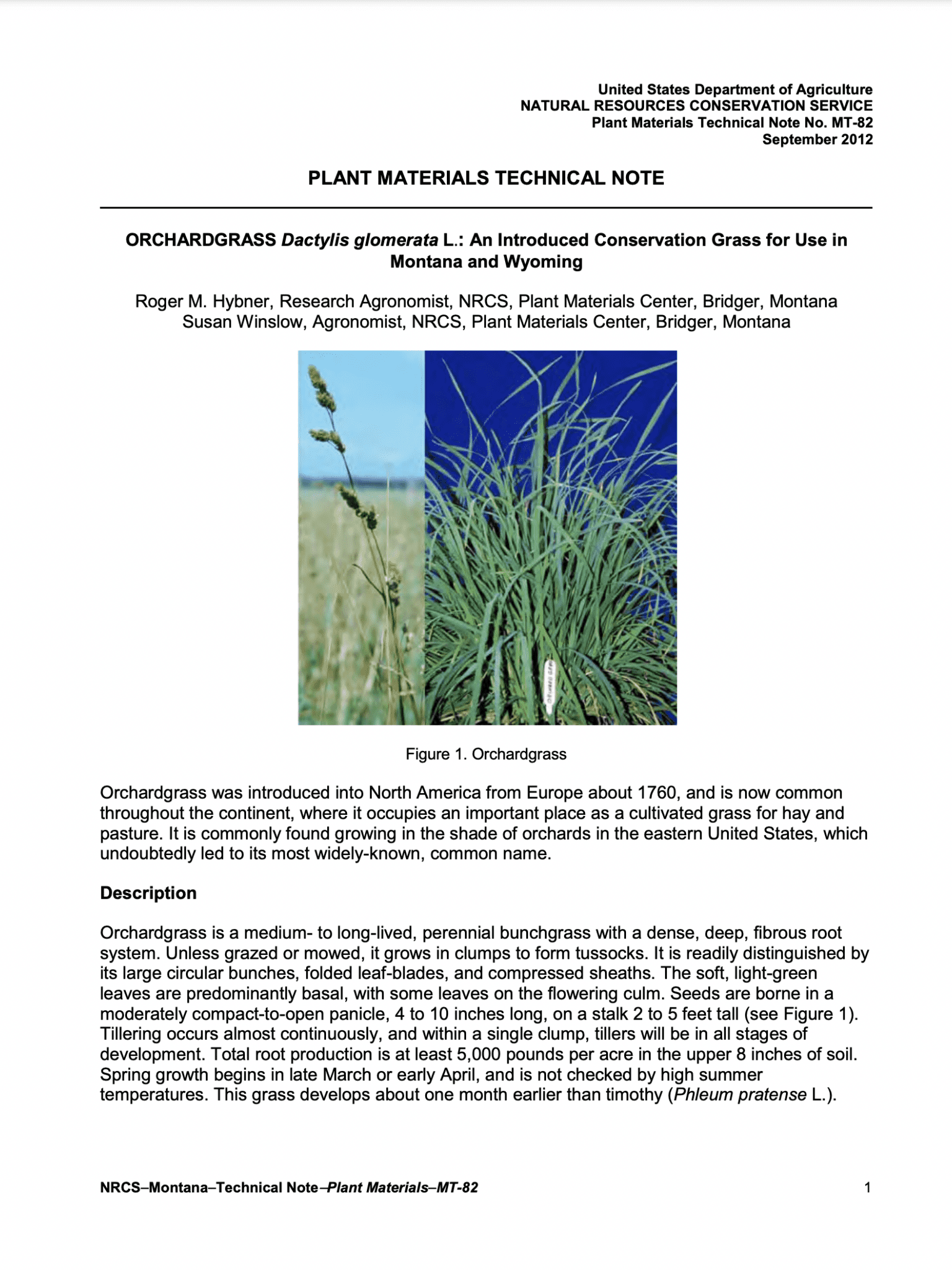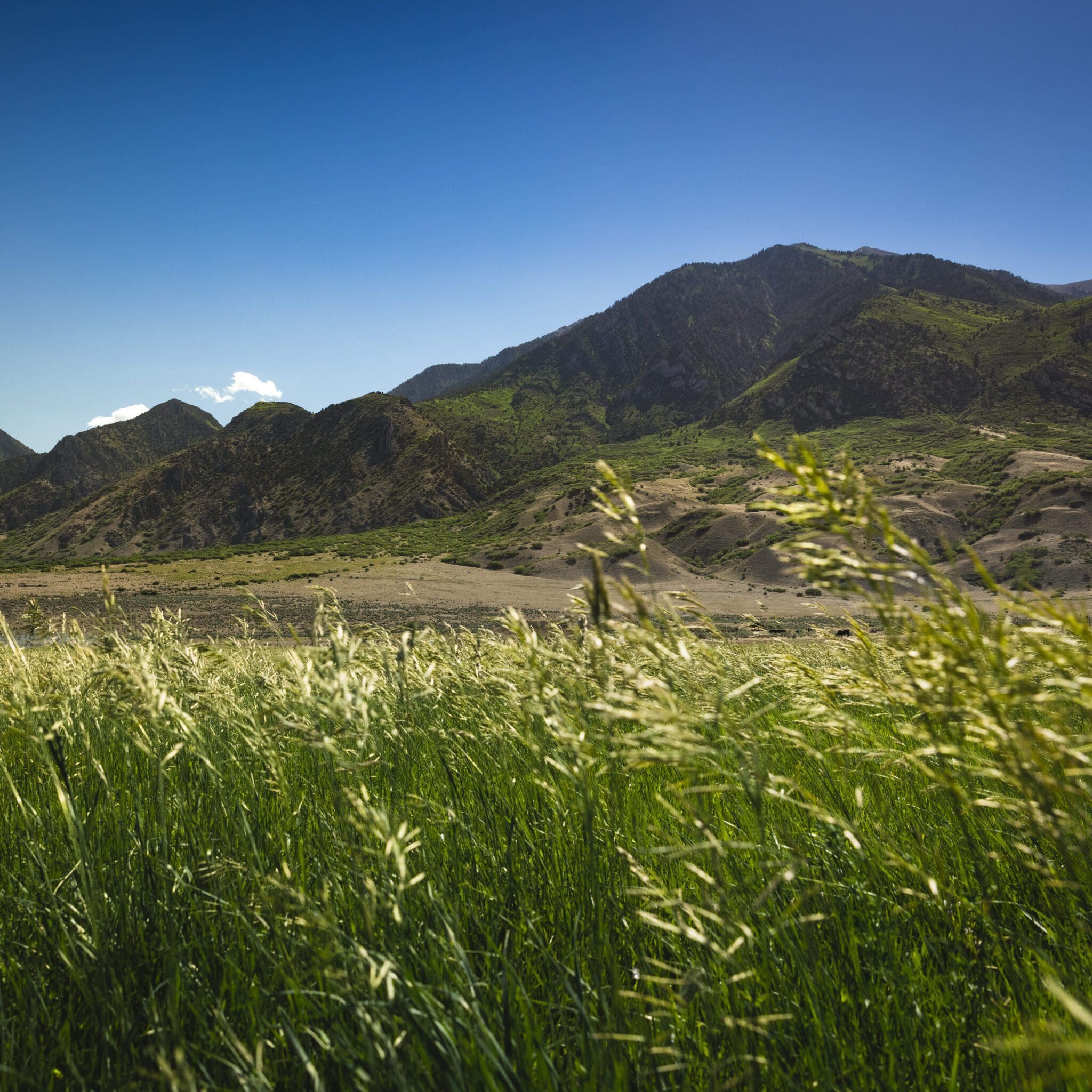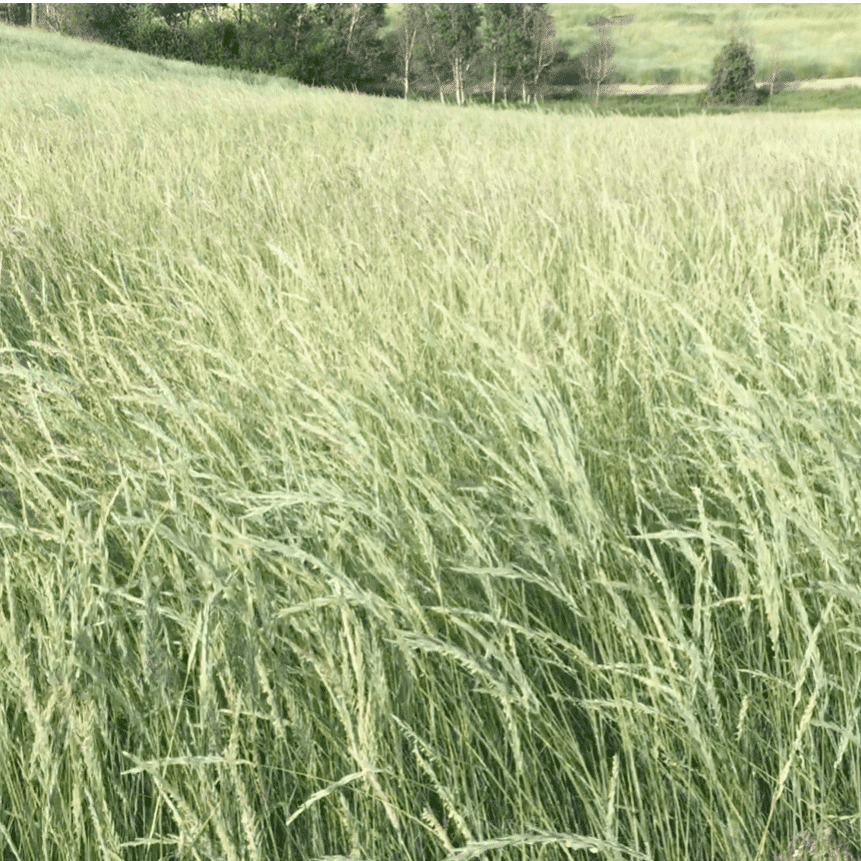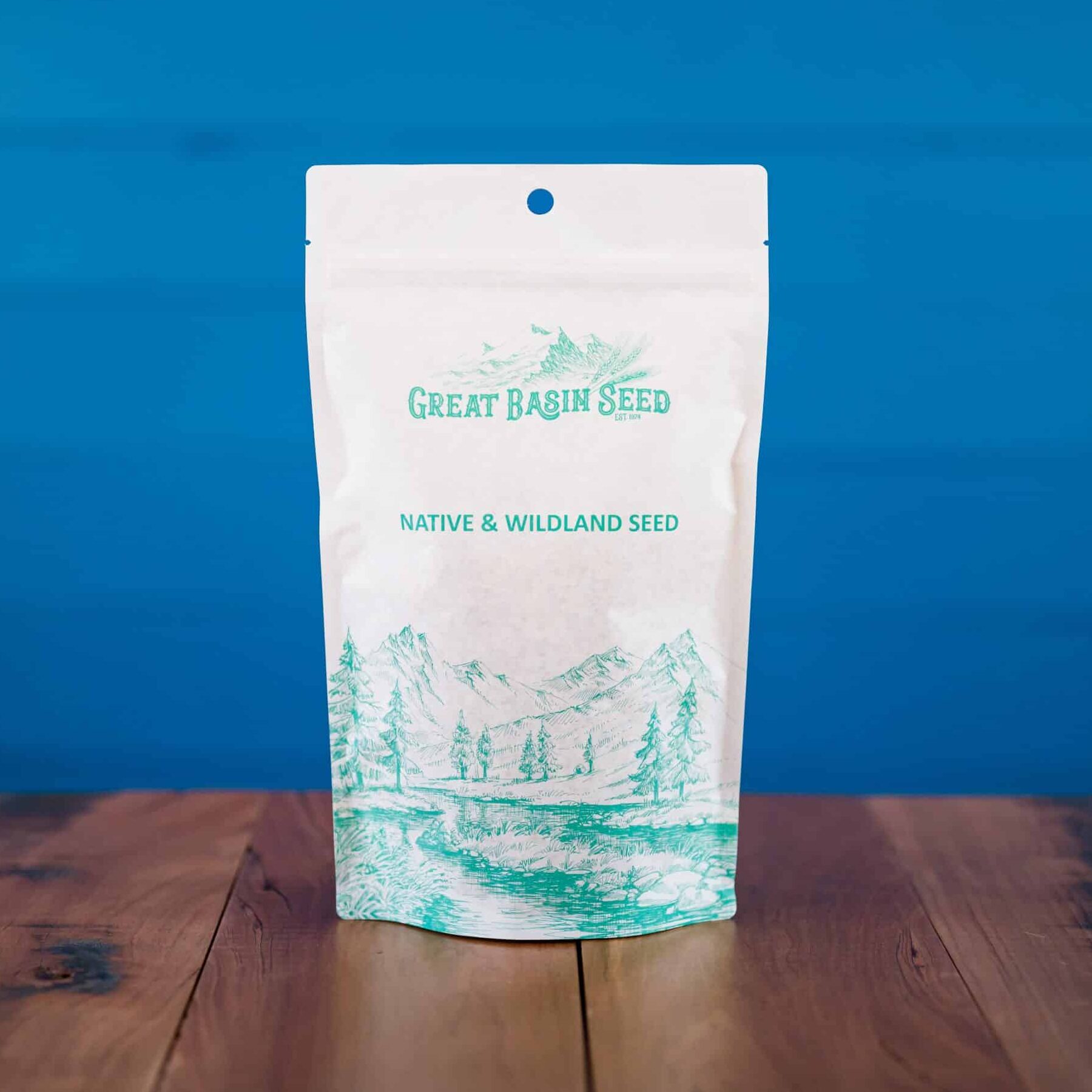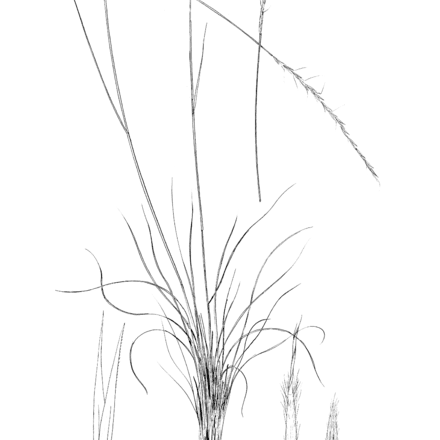Sundown Orchardgrass
- OUT OF STOCK – try Sunset Brand (LINK)
- Late maturity- up to 7 days later than Potomac
- Suitable for grazing or haying
- Aggressive tillering
- Fast re-growth
Out of stock
Sundown orchardgrass was bred for improved forage quality and resistance to foliar diseases (such as leaf rust and leaf spot) which can adversely affect forage quality. Maturity is similar to that of Pennlate. Sundown is highly compatible in mixes with alfalfa, timothy, and clovers. Late maturing- up to seven days later than Potomac.
Orchardgrass (Dactylis glomerata) is one of the more useful and widely distributed pasture grasses, especially on irrigated pastures. It is suitable for non-irrigated rangelands where precipitation is 18+ inches annually. It is a cool-season perennial bunchgrass. It was introduced from Europe and Asia and is found throughout North America.
Orchardgrass used for hay, pasture or silage. It is highly palatable to all classes of livestock. It is one of the best forage grasses for use in pastures and combines well with other grasses and legumes. It has a dense network of roots and provides good erosion control. Orchardgrass is often used in seed mixes for upland game birds and conservation plantings. Orchardgrass is one of the earliest species to grow in the spring.
Dactylis glomerata performs well on different textured soils ranging from clay to gravely loams and on shallow to deep soils. It is moderately tolerant of acid and alkaline (pH range of 5.8-7.0). It does not grow well in saline soils and areas with high water tables. Dryland varieties have the ability to establish and persist in areas that receive as little as 11 inches of annual precipitation. Orchardgrass is one of the earliest species to grow in the spring, making tremendous growth during cool conditions. Under irrigation or in moist situations Orchardgrass can attain heights of 24-48 inches.
Orchardgrass cures well as hay, and can be mixed with alfalfa or other legumes to provide high quality hay. It also provides excellent pasture and has the ability to remain green and continue growing while being grazed. It recovers very quickly after being grazed or cut. It is good to excellent forage for livestock and wildlife, and is especially relished by deer. Orchardgrass responds well to nitrogen fertilizer and irrigation.
Other grass species that are frequently paired with orchardgrass include perennial ryegrass, tall fescue, annual ryegrass and intermediate ryegrass.
For more information on Sundown orchardgrass visit Grasslands Oregon.
***Click on the “Quick Plant Facts” tab above for more information.
Orchardgrass NRCS Plant Guide and Fact Sheet
Orchardgrass NRCS Plant Guide and Fact Sheet
PDF version of NRCS Plant Guide & Fact Sheet
Prepared By: Tony Bush USDA NRCS Rose Lake PMC East Lansing, Michigan
Dan Ogle USDA NRCS Idaho State Office Boise, Idaho
Loren St. John USDA NRCS Aberdeen PMC Aberdeen, Idaho
Mark Stannard USDA NRCS Pullman PMC Pullman, Washington
Dr. Kevin B. Jensen USDA ARS Forage and Range Research Laboratory, Utah State University, Logan, Utah
Species Coordinator: Mark Stannard USDA NRCS Pullman Plant Materials Center
Pullman, Washington
Orchardgrass Variety Trial 2005
Orchardgrass Variety Trial 2005
Research in the Klamath Basin
Prepared By: Richard J. Roseberg and Jim E. Smith
Orchardgrass Hay Production Guide for the Columbia Basin of Washington
Orchardgrass Hay Production Guide for the Columbia Basin of Washington
Prepared By: John L Kugler, WSU Grant/Adams County Extension
Orchardgrass NRCS Plant Materials Technical Note
Orchardgrass NRCS Plant Materials Technical Note
An introduced Conservation Grass for Use in Montana and Wyoming
Prepared By: Roger M. Hybner, Research Agronomist, NRCS, Plant Materials Center, Bridger, Montana
Susan Winslow, Agronomist, NRCS, Plant Materials Center, Bridger, Montana
Helpful Links
Additional information about this product can be found on the academic websites linked below.
Synonyms
Many plants have more than one common and scientific name. We've listed a few of them below.
- Sundown Orchardgrass
- Dactylis glomerata sp. sundown
Who is Great Basin Seed?
Great Basin Seed is a seed company that specializes in seed sales and consultation for home, ranch, farm, range and reclamation. We have been a leader in the seed industry since 1974.
Our History
We've been in the seed business since 1974.
What We Offer
We offer seed for home, farm, ranch, range and reclamation projects.
Meet the Gang
We have the best employees in the world! We are proud of the work they do, and trust them to serve you!
Right: Company founder Lloyd and his wife Paula Stevens in a wildflower seed production field circa 1977
Quick Plant Facts
| Scientific Name: | |
|---|---|
| Lifespan: | |
| Origin: | |
| Plant Type: | |
| Seeds per Pound: | |
| Root Form: | |
| Planting Rate: | |
| Seeding Rate in Mix/Acre: | 5-8 lbs |
| Min. Precipitation: | |
| Best Time to Sow: | |
| Max Sowing Depth: | |
| Growth Season: | |
| Days to Germinate: | 10-21 days |
| Suitable For: | Dairy & Beef Cattle, Pasture, Hay, Silage, Horses, Sheep & Goats |


